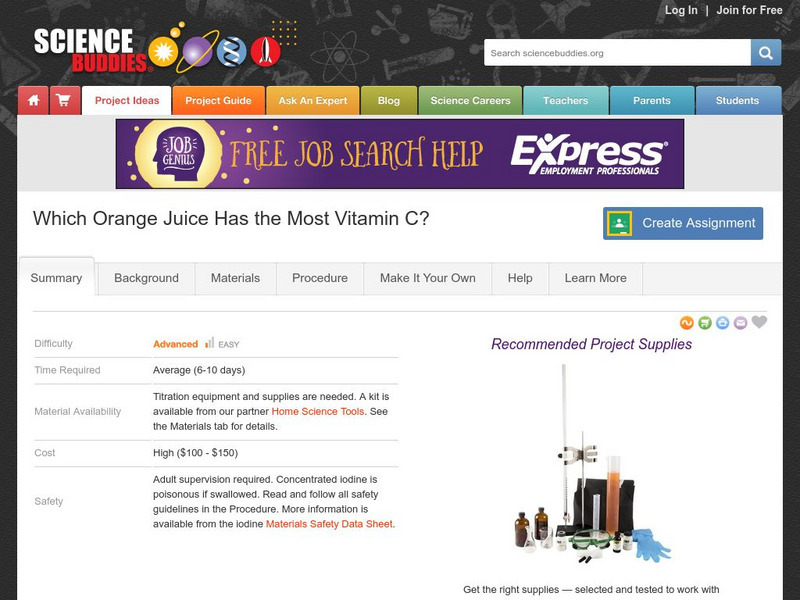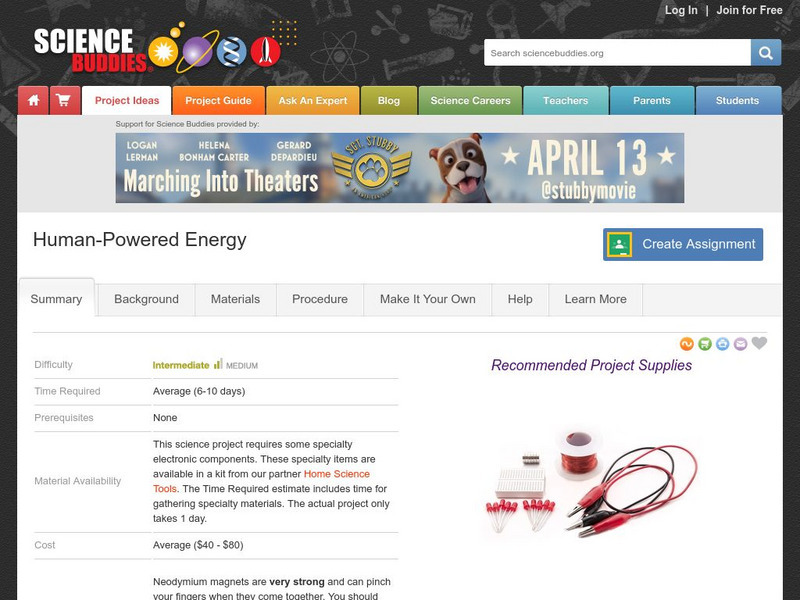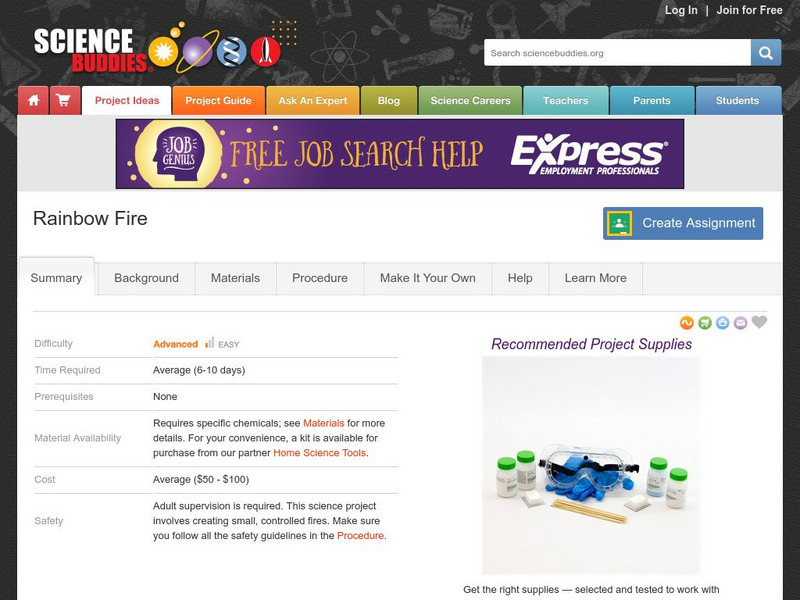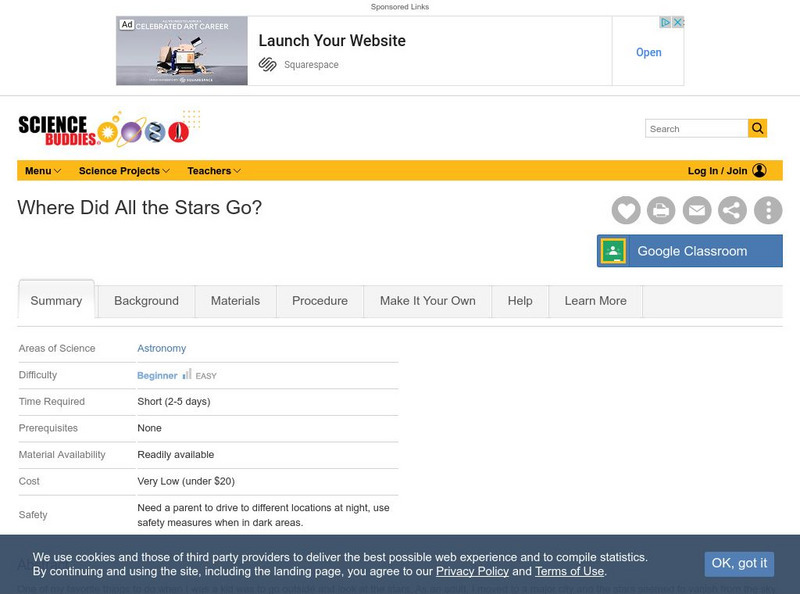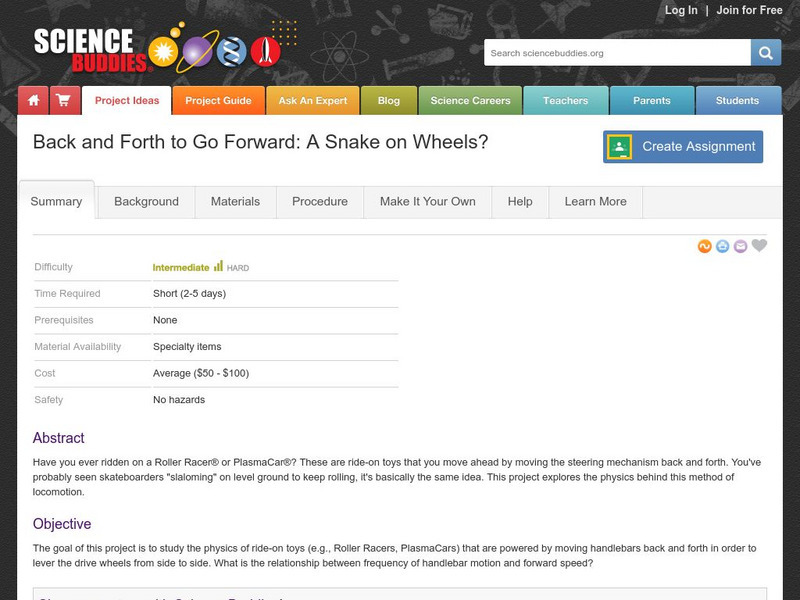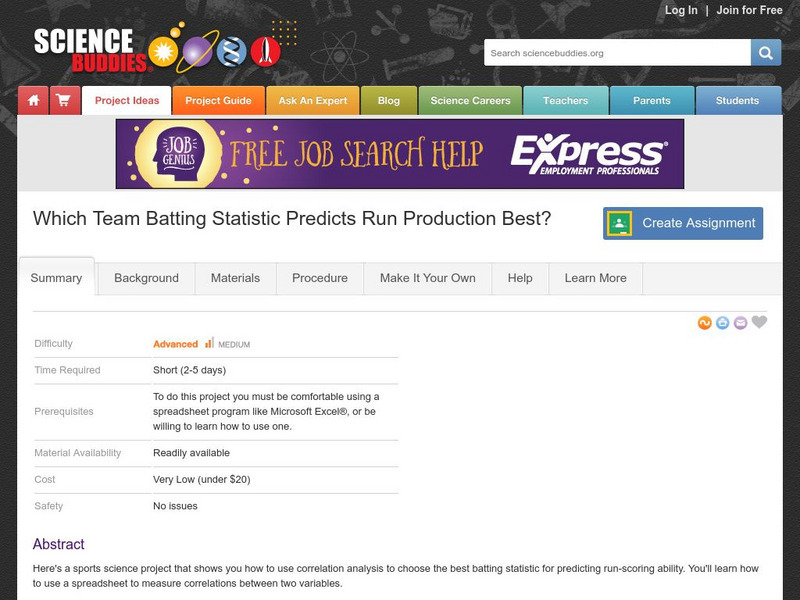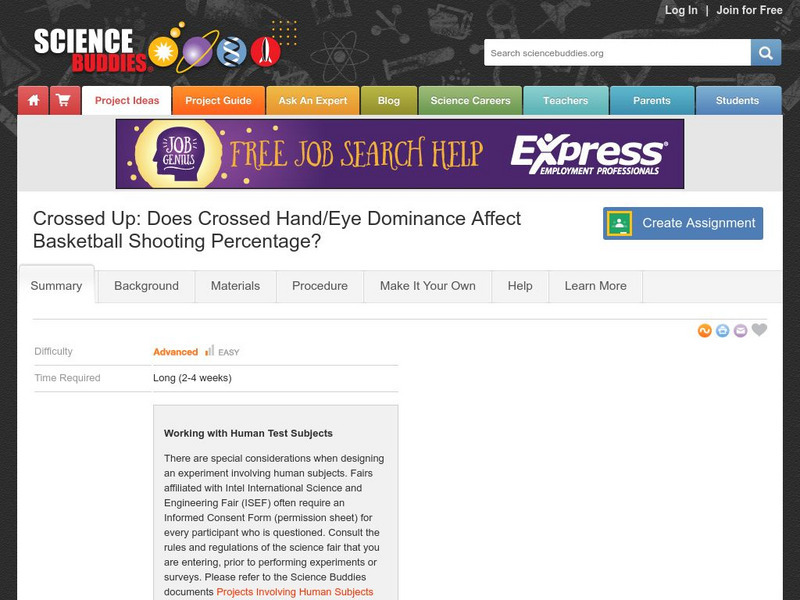Science Buddies
Science Buddies: Image Compression vs. Image Quality: Finding the Best Tradeoff
In this project you'll learn about how digital image files are encoded, and compressed. You will also measure the quality of compressed and uncompressed images, which will give you important insights into the tradeoffs between file size...
Science Buddies
Science Buddies: Follow the Bouncing Ball: A Web Animation Project
This project is a fun way to try your hand at programming. You'll learn how to create some simple animations, and you'll perform tests and make measurements to help you create more realistic-looking animations. All you need to get...
Science Buddies
Science Buddies: Follow the Bouncing Ball: A Web Animation Project
This project is a fun way to try your hand at programming and expand your knowledge of web design. You will learn how to create some simple animations, and perform tests and make measurements to help you create more realistic-looking...
Science Buddies
Science Buddies: Programming Nanor Gs in a Virtual World
Imagine yourself as a software engineer, a decade and a half from now. You are called upon to help solve the world energy crisis by programming nano-organisms (NANORGs) to extract energy from industrial sludge. Your program must be small...
Science Buddies
Science Buddies: Programming Nanor Gs in a Virtual World
In this two week long project, you will design an assembly-language control program for the microprocessors of a colony of nano-organisms (NANORGs) in a virtual world. If you're up for a real programming challenge, this is the project...
Science Buddies
Science Buddies: Which Orange Juice Has the Most Vitamin C?
In this project you'll learn how to measure the amount of vitamin C in a solution using an iodine titration method. You will hypothesize which juice will contain the most vitamin C, and then compare the amount of vitamin C in three...
Science Buddies
Science Buddies: Which Materials Are the Best Conductors?
There are two main types of materials when it comes to electricity, conductors, and insulators. What are they made of? Find out by testing different materials in a circuit to see which ones conduct the most electricity.
Science Buddies
Science Buddies: Shaking Up Some Energy
Shake N' Light flashlights have been advertised on televisions across the nation in the recent year. But many do not understand just how they get energy to light up the bulb without using batteries. Do this experiment to make your own...
Science Buddies
Science Buddies: Rainbow Fire
Astronomers can determine the atomic composition of distant stars by measuring the spectrum of light emitted by the star. Sound cool? Well in this project you can do something similar by observing the color of flames when various...
Science Buddies
Science Buddies: One Bad Apple Spoils the Whole Bunch: Plant Hormone Ethylene
We have all heard the old saying, "One bad apple spoils the whole bunch." Due to the production of the plant hormone ethylene during the ripening process, this saying proves true. This experiment will investigate the role of ethylene in...
Other
Dong a Newspaper: Korean Children's Newspaper
Well-known Korean children's newspaper website. Articles match general interests of elementary to middle school students: reports on world news, movie stars, singers, sports, science, school news, cartoons, writing competition and study...
Science Buddies
Science Buddies: What Makes the Rings of Saturn?
Saturn is a unique planet because of the many beautiful rings surrounding it. How are all of those rings made? Why is each ring unique?
Science Buddies
Science Buddies: Where Did All the Stars Go?
If you live in a big city or urban area it is hard to see many stars at night. In most urban areas only the most brilliant stars, planets and the moon can be seen. This is because of something called light pollution which is the...
Science Buddies
Science Buddies: The Moon and the Stars
When you are in the city, only a few of the brightest stars are visible. But when you are in the country, you can see many more stars than you can count. Sometimes you can even see the bright belt of our galaxy, the Milky Way. In this...
Science Buddies
Science Buddies: Weather and Climate in Your Neighborhood
Do you live in an area where the weather changes a lot from season to season throughout the year? Or do you live in a place where the weather stays pretty much the same all year long? How dynamic is the weather, and how does it compare...
Science Buddies
Science Buddies: Are You Gellin'?
Chances are, you have several materials around your house made of gelatinized materials. Gels are used in all kinds of products and materials: pudding, diapers, insoles, packaging, ice cream, toothpaste, and much more. In this project,...
Science Buddies
Science Buddies: Hull Design and Hydrodynamics
Experiment with designs of different hulls for boats to see which hulls are suited for which purpose. The Science Buddies project ideas are set up consistently beginning with an abstract, objective, and introduction, followed by a...
Science Buddies
Science Buddies: Slime Chemistry
Have you ever wondered how fun toys like Silly Putty, Gak, and Slime are made? These products are so much fun because of the properties of polymers, which make them delightfully bouncy, stretchy, sticky, moldable, breakable, hard, soft,...
Science Buddies
Science Buddies: Back and Forth to Go Forward: A Snake on Wheels?
Have you ever ridden on a Roller Racer or Plasma Car? These are ride-on toys that you move ahead by moving the steering mechanism back and forth. You've probably seen skateboarders "slaloming" on level ground to keep rolling, it's...
Science Buddies
Science Buddies: Which Team Batting Statistic Predicts Run Production Best?
Here's a sports science project that shows you how to use correlation analysis to choose the best batting statistic for predicting run-scoring ability. You'll learn how to use a spreadsheet to measure correlations between two variables.
Science Buddies
Science Buddies: Slinking Slinkies
Want to do a project with a toy your parents, or even grandparents, might have played with? Slinkies are fun toys that also make great science fair projects. In this experiment you can build an inclined plane to compare the walking speed...
Science Buddies
Science Buddies: Testing a Parabolic Reflector With Light From an Led
You can see examples of parabolic reflectors in flashlights, car headlights, satellite TV antennas, and even on the sidelines at football games. In this project, you can use an LED and a simple photodector to investigate this concept.
Science Buddies
Science Buddies: Dog Toys: What Makes One a Favorite or a Flop to Fido?
It seems as though dogs, like people, have definite preferences for their play things. This fun project investigates what makes a toy interesting to a dog. In these experiments, you and your dog can have some fun while you learn about...
Science Buddies
Science Buddies: Does Crossed Hand/eye Dominance Affect Basketball Shooting %?
Everyone's used to the idea that people are either right-handed or left-handed for particular tasks. That is, one hand is preferred (or dominant) over the other for a particular task. Did you know that people also have a dominant eye?...







